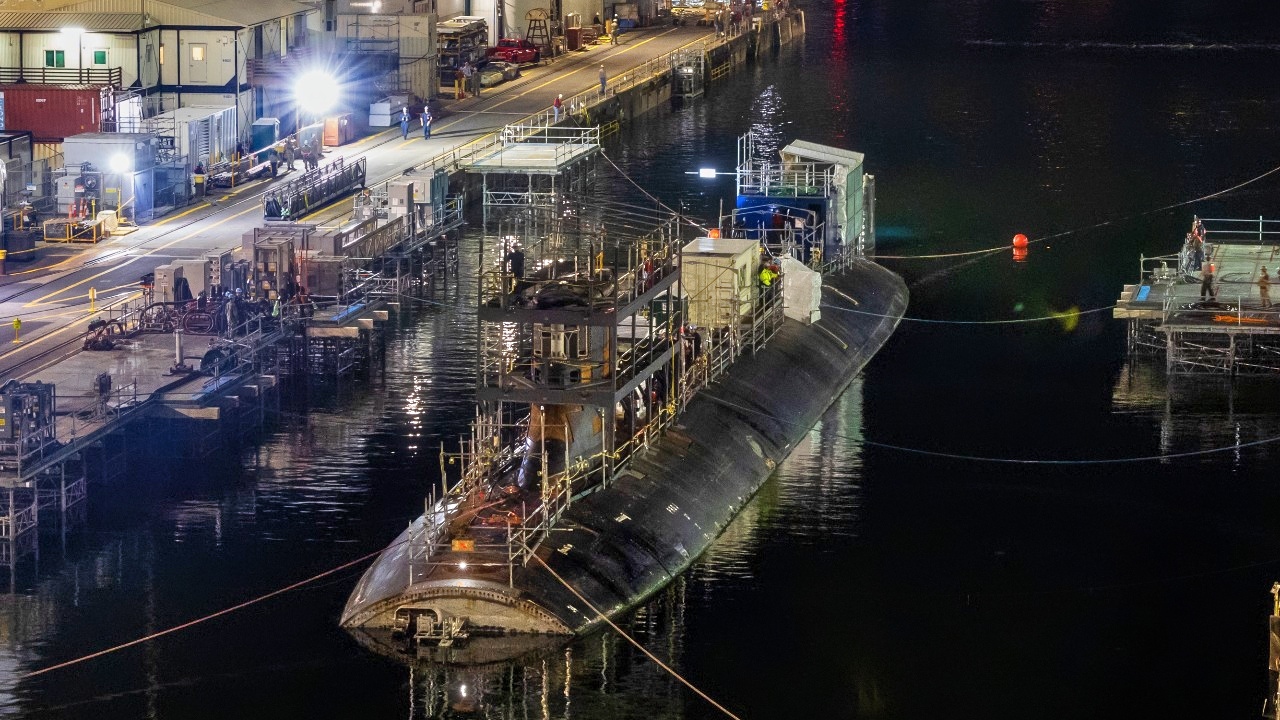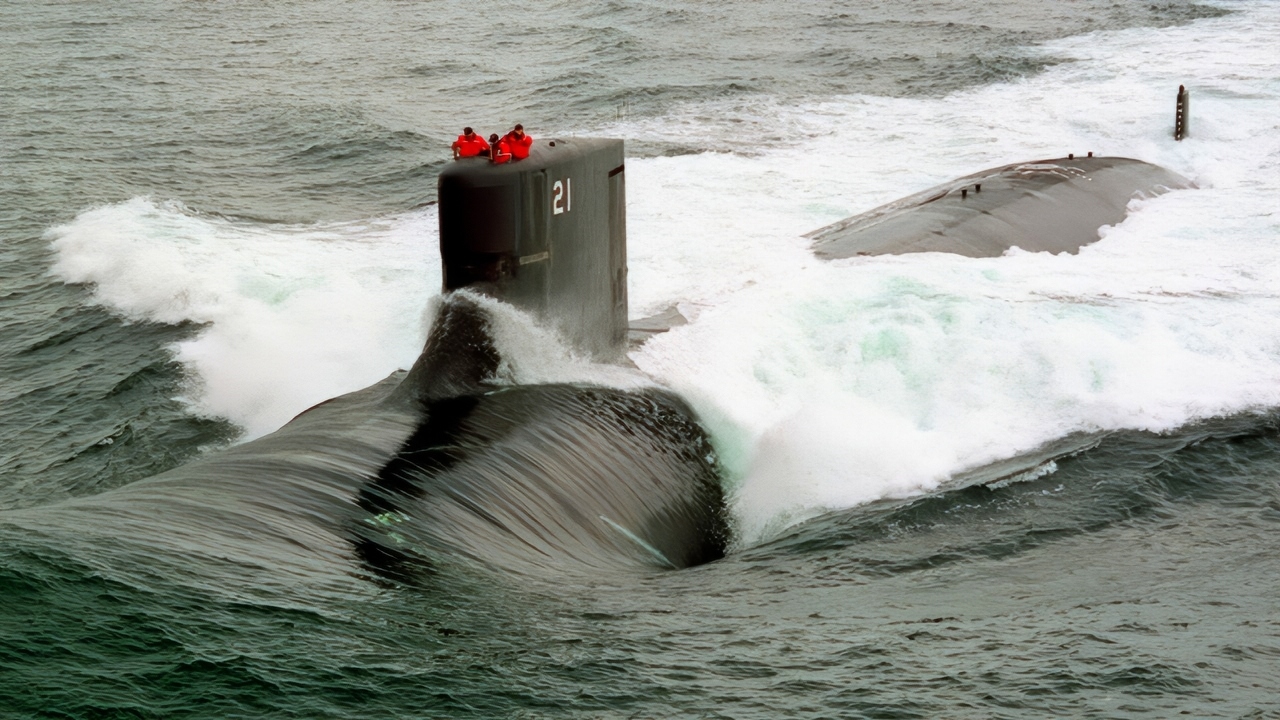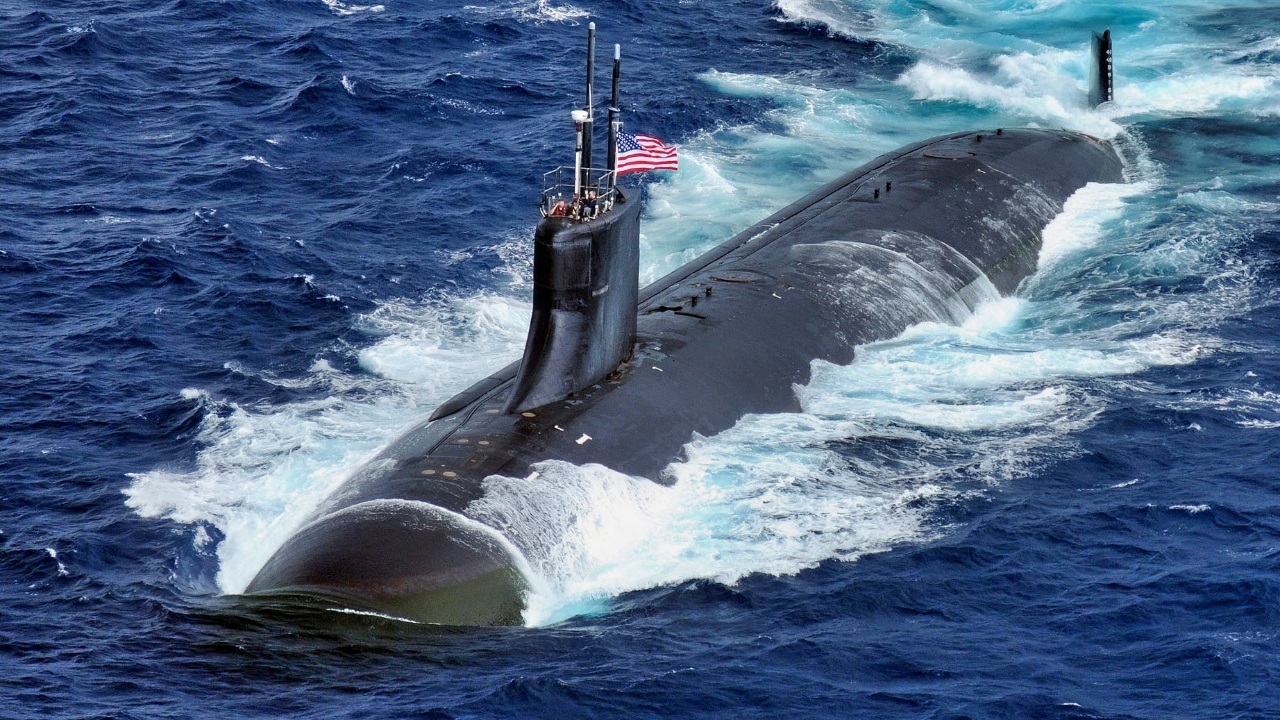Key Points and Summary – USS Connecticut (SSN-22), one of just three elite Seawolf-class attack submarines, has been sidelined since a 2021 seamount collision in the South China Sea.
-Damage to the bow and ballast tanks triggered an Extended Docking SRA at Puget Sound, complicated by dry-dock fixes, labor shortages, and custom fabrication— including a new sonar dome funded by emergency appropriations.

USS Connecticut (SSN 22) is docked for its Extended Docking Selected Restricted Availability July 12, 2023 at Puget Sound Naval Shipyard; Intermediate Maintenance Facility.
-A Navy probe cited preventable navigation errors and relieved the boat’s command team.
-Now slated to return in late 2026, Connecticut’s absence highlights U.S. submarine maintenance bottlenecks and a hard Indo-Pacific capability gap as Seawolf enters maintenance and Jimmy Carter remains task-limited.
USS Connecticut: The Seawolf Sub Knocked Out—And Why It Still Matters
The USS Connecticut is a Seawolf-class SSN in service with the United States Navy.
These nuclear attack submarines were initially intended to replace the older Los Angeles-class subs, but plans to procure more were cancelled after the Cold War ended. Very few Seawolf-class subs were built, making them a rare and vital asset for the Navy.
In one unfortunate case, however, the USS Connecticut collided with a seamount while maneuvering in the South China Sea. Thankfully, the incident caused no significant injuries and did not damage any vital systems. Ever since the incident, the USS Connecticut has been undergoing repairs and is expected to return to active duty in 2026.
The 2021 Seamount Collision
Commissioned in December 1998, the USS Connecticut is the second of only three Seawolf-class submarines ever constructed.

USS Connecticut Seawolf-Class Submarine. Image Credit: Creative Commons.
The Seawolf program was initially envisioned as a fleet of 29 submarines; however, the end of the Cold War and budgetary constraints led to its reduction to just three vessels: the USS Seawolf (SSN-21), the USS Connecticut (SSN-22), and the USS Jimmy Carter (SSN-23).
These submarines were designed to be faster, quieter, and more heavily armed than their predecessors, with advanced sonar systems, eight torpedo tubes, and the ability to launch Tomahawk cruise missiles and Harpoon anti-ship missiles.
Their nuclear propulsion systems enable them to operate submerged for extended periods, and their reinforced hulls allow for operations under Arctic ice.
On October 2, 2021, it collided with an uncharted underwater seamount while operating in the South China Sea. The impact caused significant damage to the submarine’s bow and forward ballast tanks and injured eleven crew members.
The vessel was able to surface and make its way to Guam for emergency repairs before eventually traveling to San Diego and then to the Puget Sound Naval Shipyard in Bremerton, Washington, for full restoration.

The U.S. Navy attack submarine, USS Seawolf (SSN 21), conducts Bravo sea trials off the coast of Connecticut in preparation for its scheduled commissioning in July 1997. Image Credit: Creative Commons.
A Navy investigation into the incident found that the collision was preventable and attributed it to failures in command and navigation. As a result, the submarine’s commanding officer, executive officer, and chief of the boat were all relieved of duty.
The USS Connecticut is Out
The repair process for the USS Connecticut has been anything but straightforward. The submarine entered Dry Dock 5 at Puget Sound Naval Shipyard in early 2022, but work was delayed due to seismic vulnerabilities discovered in the drydock infrastructure.
These issues were addressed by mid-2023, allowing the Navy to proceed with what is known as an Extended Docking Selected Restricted Availability (EDSRA), a major maintenance phase that includes structural repairs and system upgrades.
The damage to the bow was particularly severe, requiring the complete replacement of the sonar dome and other forward components.
Because the Seawolf-class submarines are unique and none have been decommissioned, spare parts are not readily available.
This has necessitated custom fabrication of components, including a new bow dome, which Congress funded with an emergency allocation of $40 million, along with an additional $10 million for related repairs.
As if the damages weren’t bad enough, the labor shortages at the repair dock further exacerbated issues and pushed back Connecticut’s repair timeline.
The Navy has struggled in recent years to complete submarine maintenance on schedule, and the Connecticut’s situation is emblematic of broader issues affecting the fleet. Nearly 40 percent of the Navy’s attack submarines are currently in maintenance or awaiting repairs, a figure that has raised concerns among defense analysts and lawmakers.
The Navy has emphasized that Connecticut’s nuclear propulsion system was not affected by the collision and continues to operate as designed, which has helped streamline some aspects of the repair process.
Summed Up in 4 Words: The Navy Needs Connecticut
Initially, the Navy projected that the Connecticut would return to active duty by the fall of 2025. However, delays in the repair process have pushed this timeline back, and the submarine is now expected to rejoin the fleet in late 2026.
The total duration of the EDSRA is estimated to be approximately 31 months, with the formal start of the repair phase scheduled for February 2023. While this timeline is more extended than initially anticipated, Navy officials have stressed the importance of ensuring that the submarine is fully restored and mission-ready before it returns to service.
The extended absence of the USS Connecticut from active duty hinders the U.S. Submarine Force.
The Navy is currently facing a gap in undersea capabilities, and the delay in the SSN(X) next-generation submarine program means that existing vessels, such as the Connecticut, must remain operational for longer than originally planned.
The Seawolf-class submarines, despite their age, remain among the most capable in the world, and their continued service is essential for maintaining U.S. dominance in undersea warfare.
The USS Connecticut is a vital asset for U.S. operations in the Indo-Pacific region. Its stealth and speed make it ideal for intelligence gathering, anti-submarine warfare, and protecting carrier strike groups.
The submarine’s ability to operate under Arctic ice also makes it valuable for missions in the polar regions.
With rising tensions in the South China Sea and the broader Pacific, the Navy is eager to return the Connecticut to service.
This urgency is heightened by the fact that the USS Seawolf is scheduled to enter its own maintenance cycle in April 2026, and the USS Jimmy Carter is heavily modified for special operations and espionage missions, limiting its availability for conventional tasks.
About the Author: Isaac Seitz
Isaac Seitz, a Defense Columnist, graduated from Patrick Henry College’s Strategic Intelligence and National Security program. He has also studied Russian at Middlebury Language Schools and has worked as an intelligence Analyst in the private sector.
More Military
The F/A-18 Hornet Fighter Has a Message for the U.S. Navy
F-15E Strike Eagle Has Just 1 Mission
Russia’s Su-27 Flanker Fighter: Moscow’s Best Warplane Ever? You Decide
Iowa-Class Battleship USS Wisconsin Has a Message for the U.S. Navy
‘Apex Predator’: The Royal Navy’s New Astute-Class Submarine Is Quiet as ‘Baby Dolphin’










